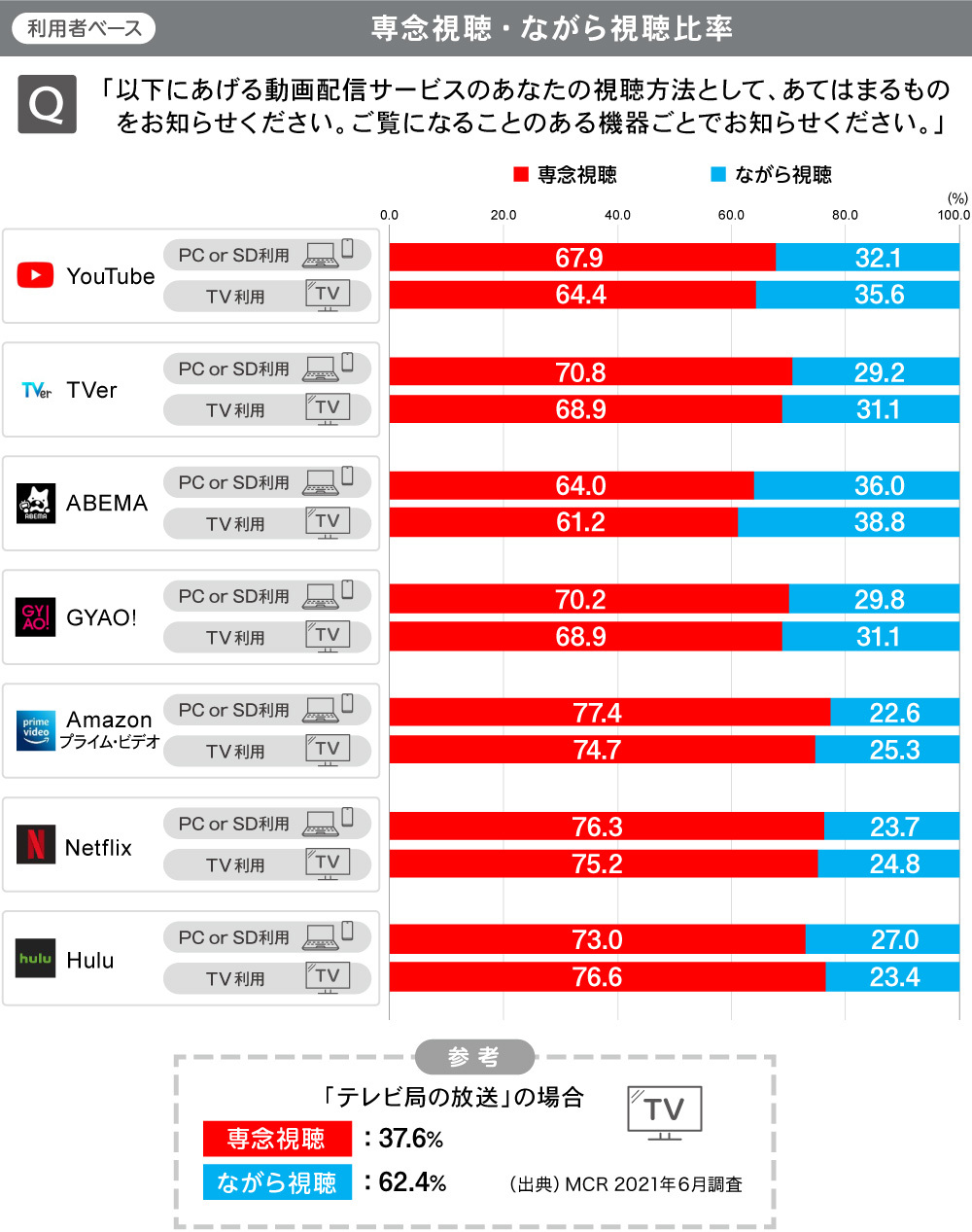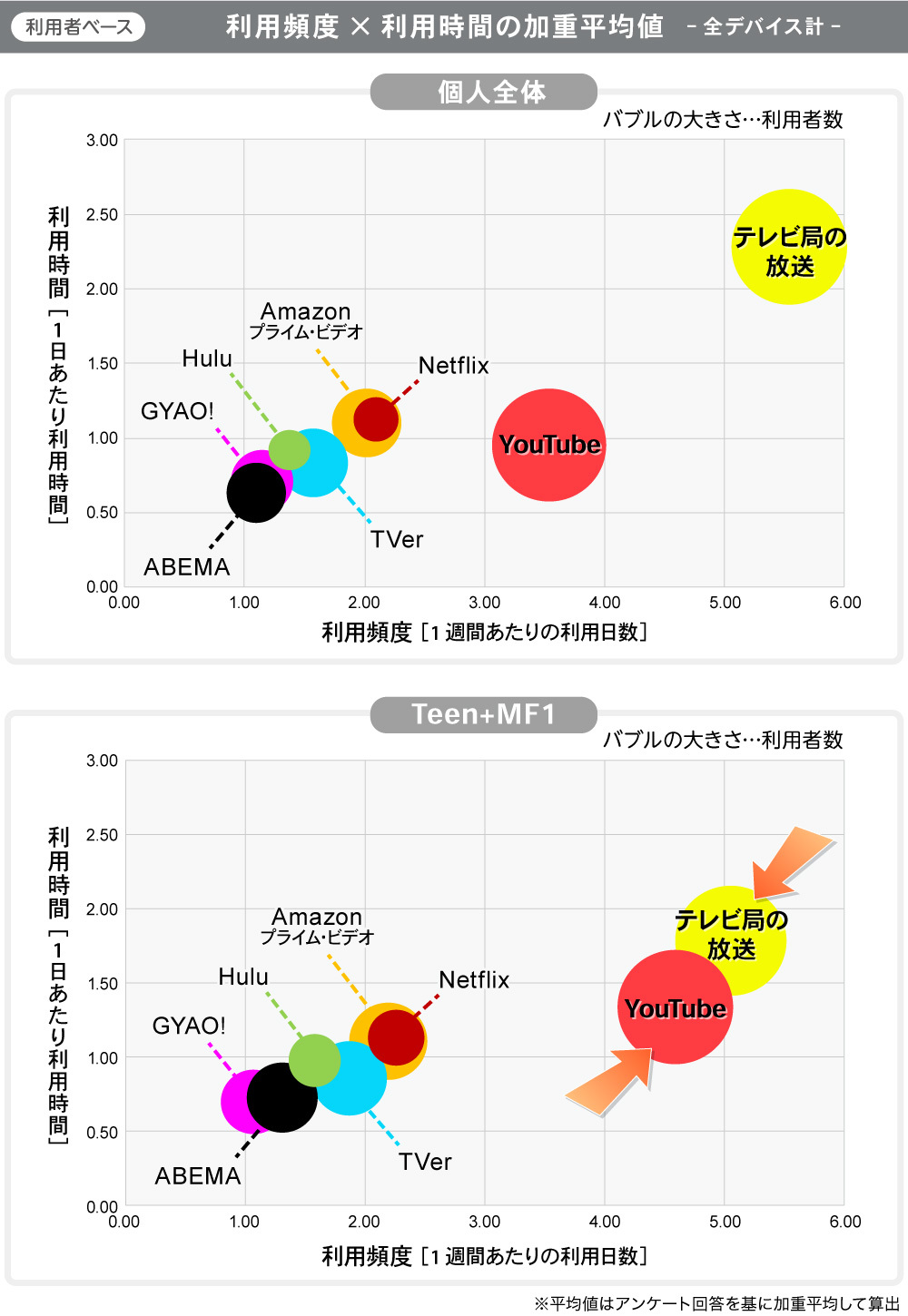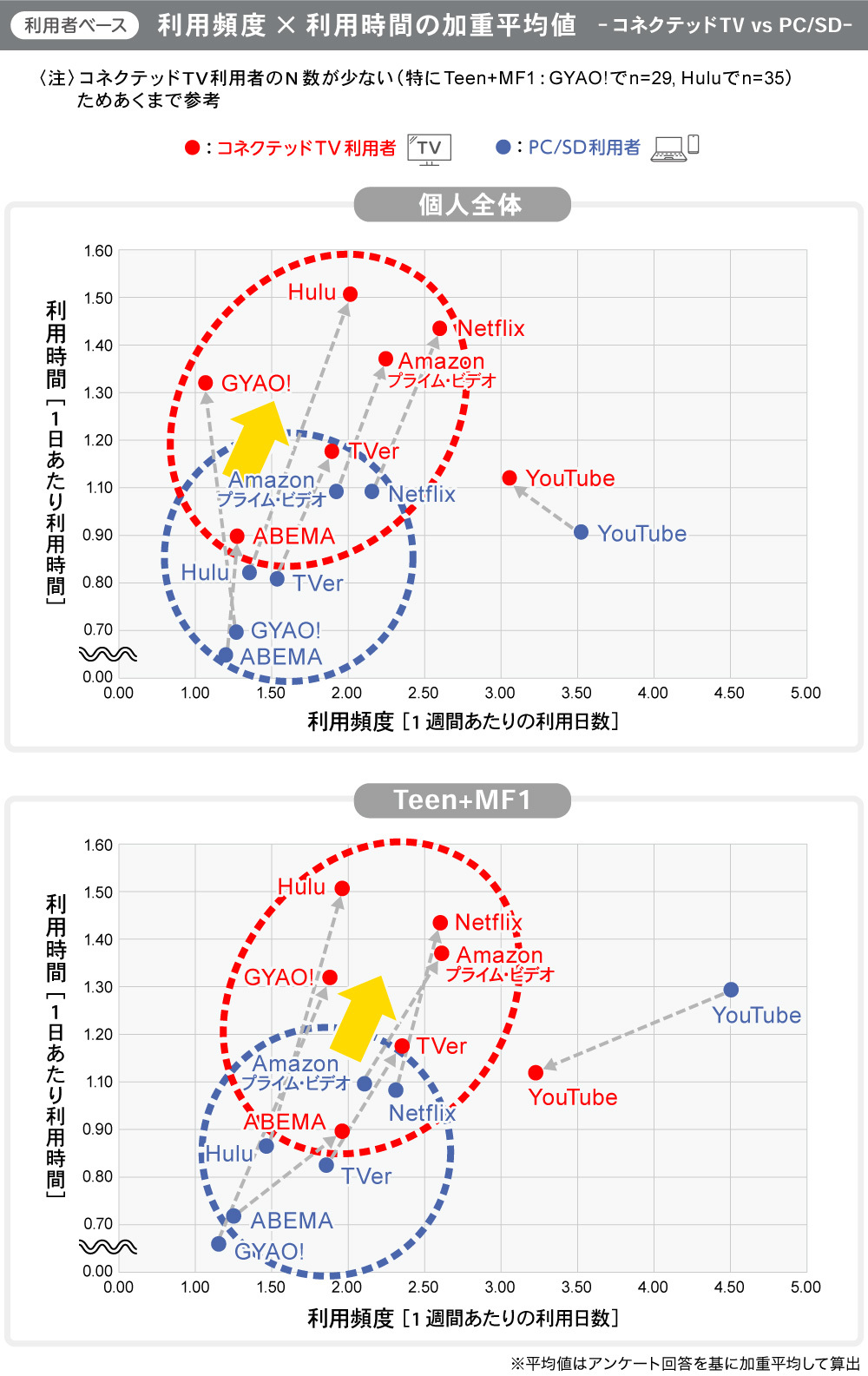Note: This website was automatically translated, so some terms or nuances may not be completely accurate.
Is TV's Role Changing!? Delving into the Usage Realities of "Connected TV"
In recent years, internet-connected televisions, known as "Connected TV," have rapidly gained popularity.
The internet connection rate for TVs has doubled in the last five years, rising from 26.3% to 52.1% (※1). Furthermore, the number of people watching video streaming services like TVer and YouTube on their TVs has surged dramatically. As a result, the role of the television set has shifted significantly from being a device solely for watching broadcast TV to a device for viewing all types of video content, including streaming services.
Against this backdrop, Dentsu Inc. conducted its own research into the previously unclear usage patterns of "Connected TV" and its advertising effectiveness. This series examines how companies and broadcasters should perceive and engage with "Connected TV" going forward, incorporating findings from various surveys.
In Part 1, Takayuki Matsutomo from Dentsu Inc.'s Radio,TV Business Produce Division, Data Promotion Department, shares insights from the "Connected TV Usage Survey" (August 2021; survey overview here ). He highlights the distinct viewing styles of video streaming services compared to traditional TV broadcasts and key points for future video-based communication activities.
*1 Source: ACR/ex April-June 2016-2021, Tokyo 50km radius, ages 12-69, both genders

Connected TV viewing is characterized by "dedicated viewing" and "co-viewing"
First, let's look at the results comparing viewing devices for major video streaming services.

While broadly categorized as video streaming services, viewing trends differ by platform. Approximately 30-40% of viewers for "Amazon Prime Video," "Netflix," and "Hulu" watch on television sets (TV devices), while around 10-20% for "YouTube," "TVer," "ABEMA," and "GYAO!" do so.
This difference is likely due to the type of content being viewed. Services like "Amazon Prime Video," "Netflix," and "Hulu," which primarily offer long-form content like movies, have a higher proportion of viewing on TV sets, which are easier to watch on a large screen. For other video streaming services, the viewing ratio on TV sets is still lower compared to PCs/smart devices (hereafter SD), suggesting they are still in the process of gaining traction.
Next, the chart below shows the results of asking about viewing styles by video streaming service and viewing device.

While traditional TV broadcasts are characterized by a high proportion of "distracted viewing," video streaming services show a higher proportion of "focused viewing" compared to "distracted viewing," even when watched on TV sets.
This characteristic likely stems from users often watching video streaming service content with a specific purpose. However, the fact that there is almost no difference compared to viewing on PCs/SDs is a surprising result.
Furthermore, multiple streaming services showed that "shared viewing" exceeded half of all viewing on connected TVs. This is likely due to the large screen size of TV sets, suggesting that scenes of family and friends watching content together in living rooms where TVs are placed are becoming more common in households.

TV broadcasting's media power remains strong! However, signs of change are emerging among younger audiences
Next, we compared the media power of television broadcasting and video streaming services.

Looking at the entire population, television broadcasting has the highest usage frequency and duration. Despite recent talk of people turning away from TV, this shows television's media power remains strong.
However, focusing on younger demographics like Teen+MF1 (ages 15-34), while TV broadcasts still lead in both frequency and duration of use, their scores have slightly declined. Conversely, streaming services, particularly YouTube, have seen their scores rise and are closing in on TV broadcasts.
Let's also examine trends by viewing device.

As shown in the figure above, excluding YouTube, connected TV viewing generally shows higher usage frequency and time spent. This is likely because connected TV usage tends to become more habitual and the larger screen size encourages longer viewing sessions. YouTube is an exception, as it has become a societal infrastructure as a video platform, leading to more contact opportunities via PC/SD compared to connected TV.
These results reveal that while television broadcasting retains its media power, the presence of video streaming services like YouTube is growing significantly among younger audiences.
Furthermore, as connected TV adoption grows, the higher frequency and longer usage time of video streaming services on connected TVs suggest a battle for screen share between TV broadcasts and video streaming services will unfold.
The Era of Integrated Planning Including Connected TV Distribution
This survey revealed that connected TV possesses a unique viewing style combining the "focused viewing" stemming from the proactive viewing habits characteristic of video streaming services with the "shared viewing" inherent to television sets. It also reaffirmed the enduring media power of television broadcasting while highlighting the growing presence of video streaming services on connected TV, particularly among younger demographics.
Moving forward, communication activities will require integrated media planning, creative production, and the implementation of a PDCA cycle based on advertising effectiveness measurement. This means utilizing traditional TV broadcast commercials while simultaneously considering advertising delivery to connected TVs.
Recognizing these challenges, Dentsu Inc. has begun initiatives such as developing an advertising effectiveness survey scheme for the TVer TV app in collaboration with TBS Television ( see release here ). This proof-of-concept experiment confirmed that ads viewed on TVer via connected TV deliver remarkably high advertising effectiveness. Specifically, they achieved approximately 150-225% of the impact seen when viewers encountered the same ads on PCs or smartphones, across key attitude-change metrics like "brand awareness," "usage intent," and "interest."

Even as the role of the television set changes, the effectiveness of conducting communication activities on the television set as a device remains unchanged. Dentsu Inc. will continue to collaborate with broadcasters and platform providers to aim for appropriate planning, effectiveness measurement, and solution development in next-generation media, in order to maintain and expand communication opportunities between companies and consumers.
Next time, we will introduce specific initiatives regarding advertising effectiveness research and analysis for Connected TV.
[Contact]
Dentsu Inc. Radio,TV Business Produce Division
Data Promotion Department: Park, Matsutomo
Email: connectedtv@dentsu.co.jp
【Survey Overview】
"Connected TV Usage Survey"
Survey Purpose: To clarify the usage patterns of video streaming services on connected TVs, as well as the usage patterns of television broadcasts and video streaming services.
Survey Area: Nationwide
Survey Method: Internet survey
Survey Population: Men and women aged 15 to 69
Survey Sample Size: Total 2,400 respondents
Survey Implementing Organization: Video Research Ltd.
Survey Period: August 20, 2021 - August 24, 2021
Was this article helpful?
Newsletter registration is here
We select and publish important news every day
For inquiries about this article
Author

Takayuki Matsutomo
Dentsu Inc.
Radio,TV Business Produce Division Data Promotion Department
As a media planner, I am engaged in all aspects of media planning centered on client KPIs. Since 2021, I have been working in my current department, driving the digital transformation of the television business through analysis utilizing various data and the development of new solutions.


